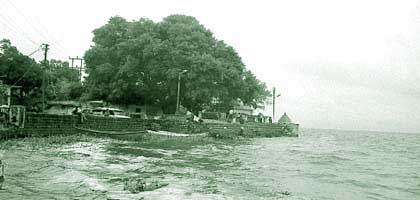|
For the deteriorating lakes, the efforts of the Bhoj Wetland Project Environmental Planning and Coordinating Organisation may provide the proverbial shot in the arm which may just revive these urban waterbodies. This is an effort by the Madhya Pradesh state government and is partially supported by the Japan Bank for International Cooperation. Bhopal is known as the city of lakes. The most important of them, the bada and chotta lakes are together called as the Bhoj Wetland. The bada lake was constructed in the 11th century and has a catchment area of 361 sq km and water-spread area of 31 sq km. the chotta lake was created downstream of the bada lake in the late 18th century. It has a small catchmant area of 9.60 sq km and a water-spread of 1.29 sq km. The bada lake has been the drinking water source for Bhopal city for long and has improved the groundwater recharging capacity. The bada and chotta lakes also provides commercial occupation and commercial values by way of fishing, boating and aquatic sports. These lakes also have religious values both for hindu and muslim communities and are being used for idol and tazia immersion. These lakes suffer a fate like any other urban waterbody, with the decline being evident visibly as well as in terms of failed quality tests. Several factors contribute to their deterioration. Contributing factors include:
All this has resulted in reduction of the storage capacity and water spread area and a threat to aquatic life. The major objectives of the BWP were to conserve and manage the Bhoj Wetlands. The project involved several pollution control and environmental conservation measures: 1. De-silting and dredging worksThis involved desilting and dredging operations, widening of the spill channel, and restoration of the lake Widening and deepening of the approach channel to the spillway from the upper lake will increase the capacity of the reservoir and act as a safety measure against floods, reducing the threats to the earthen dam structure at Kamla Park. 2. Catchment area treatment This involved afforestation, creation of buffer zones, construction of check dams, silt traps, toe walls and cascading for controlling silt entry. The buffer zones will prevent encroachment while afforestation would reduce the quantity of silt that entered these lakes. 3. Sewerage pollution prevention schemes and construction of garland drains around the lower lake 4. Shoreline and fringe areas management This meant controlling the interaction between the human population and the water bodies. This included creating a physical barrier for controlling human and animal activities, solid waste management and dhobi ghat pollution prevention 5. Water quality monitoring This aimed at first controlling the pollution and then monitoring the lakes. This included deweeding the lakes, setting up a water quality monitoring laboratory for regular surveillance, installation of floating fountains and aquaculture. The laboratory that has been set up is capable of screening for 120 parameters of water quality.
Source: |

